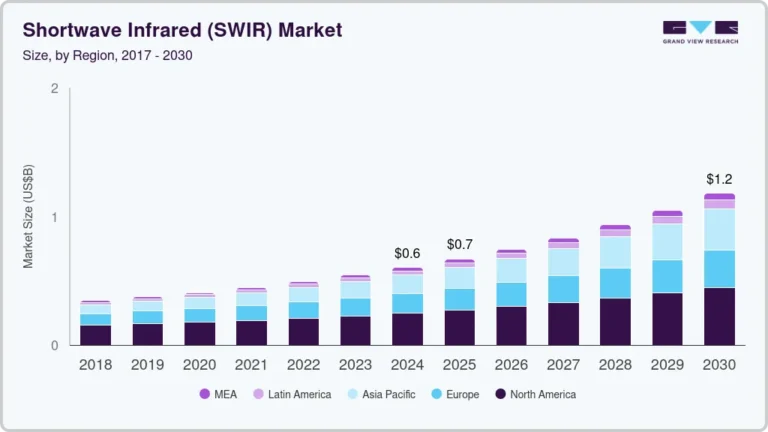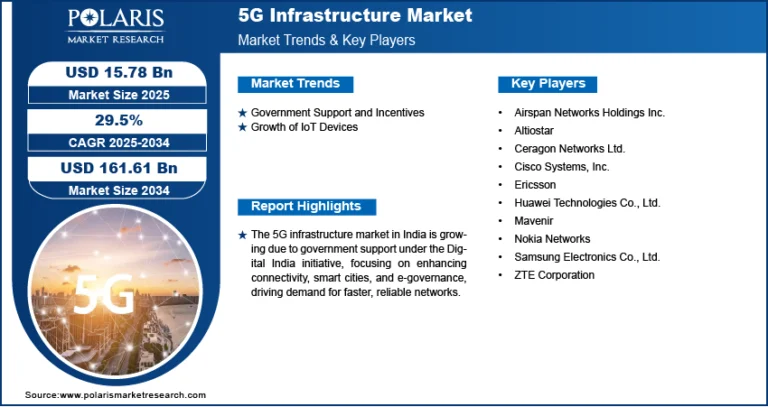AI in Telecommunication Market Projected to Reach USD 20.8 Billion by 2034 | Growing at a CAGR of 24.30%

The global AI in Telecommunication Market was valued at USD 2.5 billion in 2024 and is projected to grow at a CAGR of 24.30% from 2025 to 2034. Key drivers of this growth include network optimization and the automation of customer service operations.
Key Market Trends – AI in Telecommunication Market
- Rising Adoption of AI for Network Optimization
Telecom operators are increasingly deploying AI to manage complex networks, automate fault detection, and improve traffic routing. This enables enhanced performance, reduced downtime, and better user experience. - Surge in AI-Powered Customer Service Solutions
Virtual assistants, chatbots, and AI-driven customer support tools are being widely adopted to handle large volumes of queries efficiently, reduce response times, and cut operational costs. - Integration of AI in 5G Rollouts
AI is playing a pivotal role in the deployment and management of 5G networks. From intelligent spectrum allocation to predictive maintenance, AI enhances the speed, scale, and reliability of 5G infrastructure. - Predictive Analytics for Revenue and Churn Management
Telecom providers are leveraging AI-based predictive analytics to forecast customer behavior, identify churn risks, and implement personalized retention strategies, improving customer lifetime value. - Enhanced Fraud Detection and Security
With rising cyber threats, AI is being used to detect fraud patterns, anomalies, and suspicious activities in real-time. This strengthens data security and builds customer trust in telecom services. - AI-Driven Personalization of Services
Telecom companies are utilizing AI to analyze user behavior and deliver personalized content, plans, and recommendations. This helps increase engagement and drives revenue through targeted offerings. - Growth of AI in Edge and Cloud-Based Networks
The shift toward edge computing and cloud-native telecom architecture is accelerating AI integration. This enables real-time data processing and faster decision-making at the network edge.
Market Size & Forecast
Market size value in 2025 USD – 3.1 billion
Revenue Forecast in 2034 USD – 20.8 billion
CAGR – 24.30% from 2025 – 2034
Request for Free Sample:
Industry Overview:
The AI in telecommunication market involves the integration of artificial intelligence technologies—such as machine learning, natural language processing, and predictive analytics—into telecom operations to enhance network efficiency, customer service, and business decision-making. Telecom operators are increasingly leveraging AI for network optimization, fraud detection, predictive maintenance, chatbots, and personalized customer experiences. As data traffic surges with the rise of 5G, IoT, and cloud-based services, AI has become essential for managing complex networks and delivering seamless connectivity. This convergence of AI and telecommunications is transforming how service providers operate, compete, and innovate.
Key Market Drivers & Barriers:
A primary driver of this market is the growing demand for automation and intelligent network management amid rising data volumes and customer expectations. The rollout of 5G networks, increasing adoption of virtual assistants and chatbots, and the need for real-time analytics further propel AI integration in telecom. However, challenges such as high implementation costs, data privacy concerns, and the complexity of integrating AI with legacy systems can slow adoption. Additionally, a shortage of skilled professionals and regulatory uncertainties around AI-driven decision-making pose operational risks for telecom companies.
Market Opportunity:
The AI in telecommunication market offers substantial opportunities in areas like autonomous network management, edge AI applications, and enhanced cybersecurity solutions. With the expansion of smart cities, connected devices, and AI-driven service personalization, telecom operators can unlock new revenue streams through value-added AI services. Emerging markets present growth potential as digital infrastructure develops and mobile broadband adoption rises. By harnessing AI capabilities, telecom companies can drive innovation, reduce operational costs, and deliver superior user experiences, positioning AI as a cornerstone of next-generation telecom ecosystems.






